Alderdice Bank
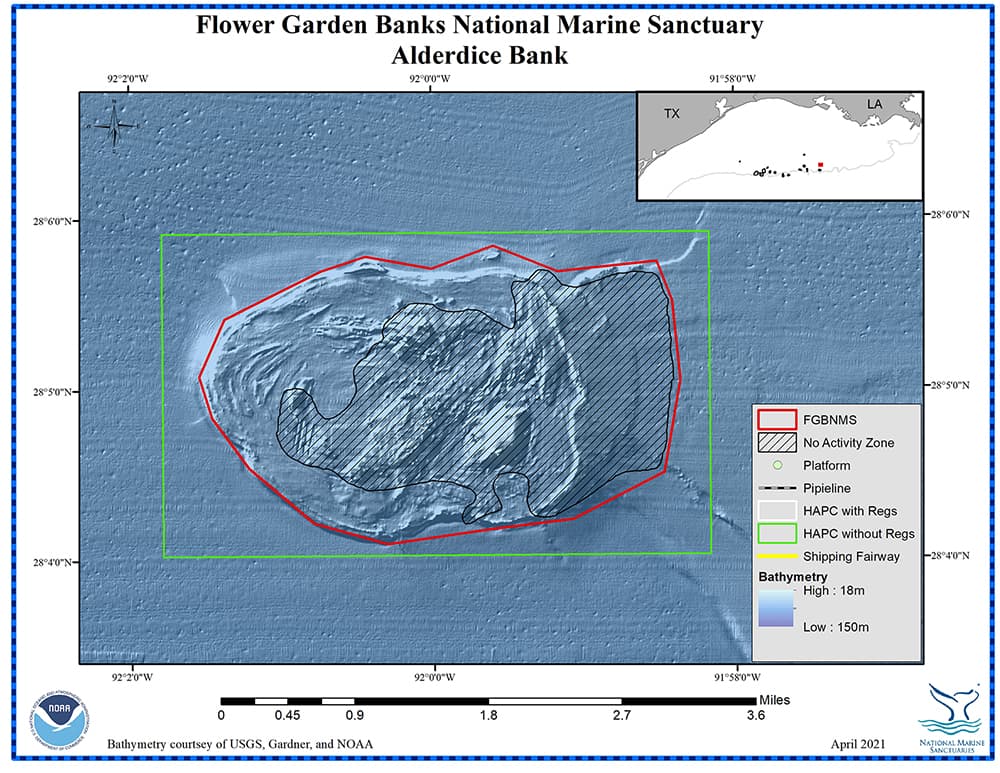
Depth Range: 200-322 feet (61-98 meters)
Distance from Land: 91 miles (146 km)
Area: 5 square miles (13 sq km)
Alderdice Bank is an oval bank lying in an east-west direction about 98 miles (157 km) to the east-northeast of East Flower Garden Bank.
Three spectacular basalt spires of Late Cretaceous origin (~77 million years old) are found at Alderdice Bank. These are the oldest known exposed rocks on the continental shelf off of Texas and Louisiana, and unique geologic features for this region.
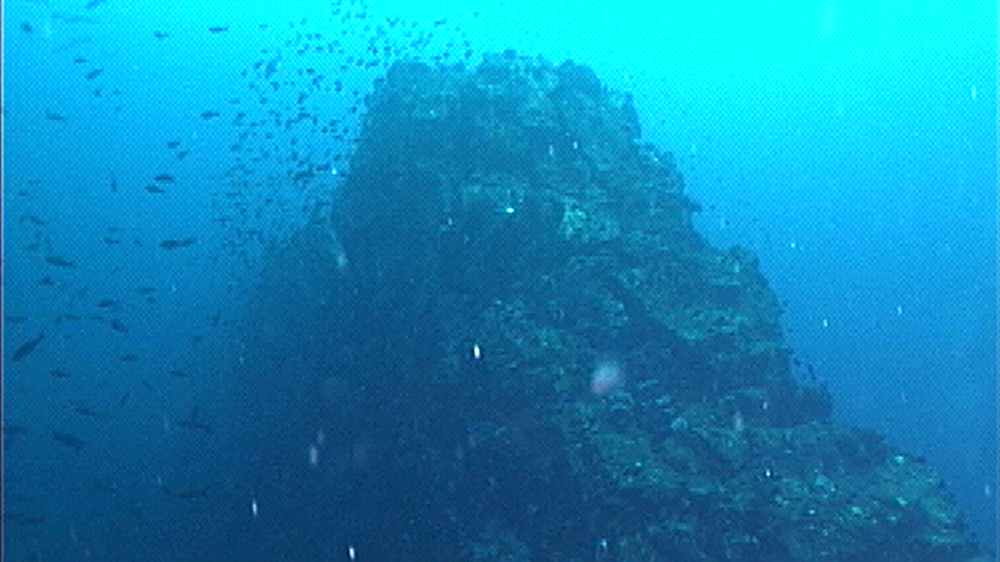
Rich fish assemblages swarm around the outcroppings. Benthic invertebrates such as basket stars, are conspicuous inhabitants of the basalt blocks, in addition to sea whips, sponges and branching bryozoan colonies.
Habitat below the spires is dominated by black corals, octocorals, fish, sponges, algae and invertebrates. Because of these extensive deep coral communities, Alderdice Bank is a Habitat Area of Particular Concern (HAPC).
Alderdice Bank was named after Robert Alderdice, founder of the Flower Garden Ocean Research Center (FGORC).
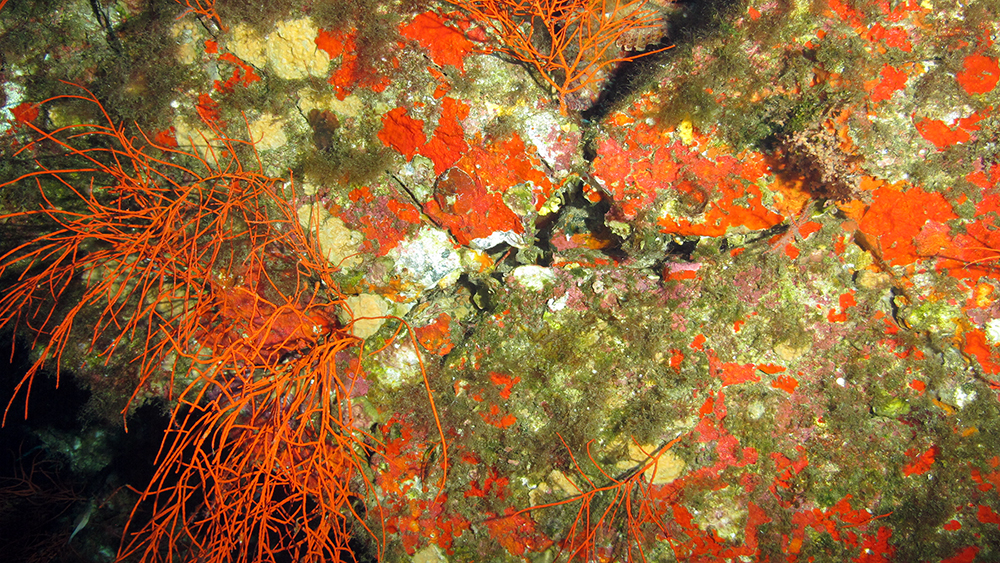
Basalt blocks at Alderdice Bank are covered in octocorals, encrusting sponges and algae. Photo: FGBNMS/UNCW-UVP
An ROV also captured amazing video of a Basket Star that was observed on this kind of substrate at Alderdice Bank.
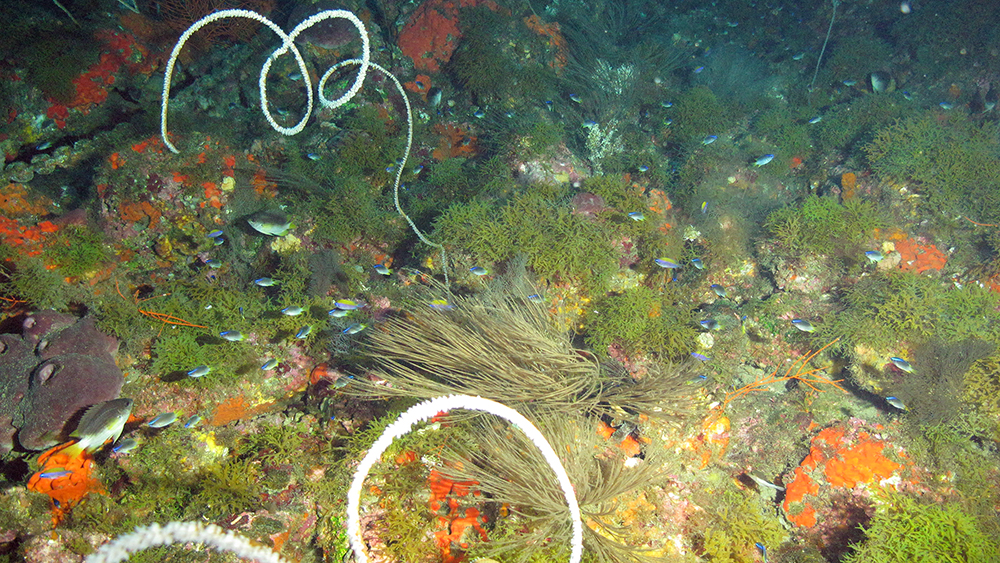
Video
The following video is a compilation of footage taken during ROV (remotely operated vehicle) and manned submersible explorations at Alderdice Bank.
0:00 A bathymetric map of Alderdice Bank followed by a second map showing the actual tracks the ROV traveled to acquire the following footage in the area around the unique basalt spires of this bank at 160 to 220 feet deep (49-67 meters).
0:27 Nurse shark, various black corals and octocorals, sea urchins, spotfin hogfish, creolefish, trumpetfish, ocean triggerfish, gray snapper, scamp grouper, various other fishes and black coral.
1:38 A bathymetric map showing a different set of ROV tracks at Alderdice Bank. Footage shows the southeast sponge/algal mound at 160 to 235 feet deep (49-72 meters).
1:47 Close-up view of spiny lobster scratching its eye with its leg.
1:58 Sponges, marbled grouper, gray snapper, rock beauties, angelfish, amberjacks, whitespotted filefish, blue angelfish, algae/sponge area, yellowtail reeffish, cherubfish, crinoid, black corals, damsels, wrasse bass, squirrelfish, southern stingray, and a variety of other fishes and octocorals. A sponge with a yellowtail reeffish and a juvenile bluehead wrasse swimming nearby.
Video Length: 3:14
Credit: FGBNMS
Who Was Robert Alderdice?
Robert Alderdice (1931-1978) was the founder and Deputy Director of programs for the Flower Garden Ocean Research Center (FGORC) at the Marine Biomedical Institute of the University of Texas Medical Branch (UTMB) in Galveston, TX.
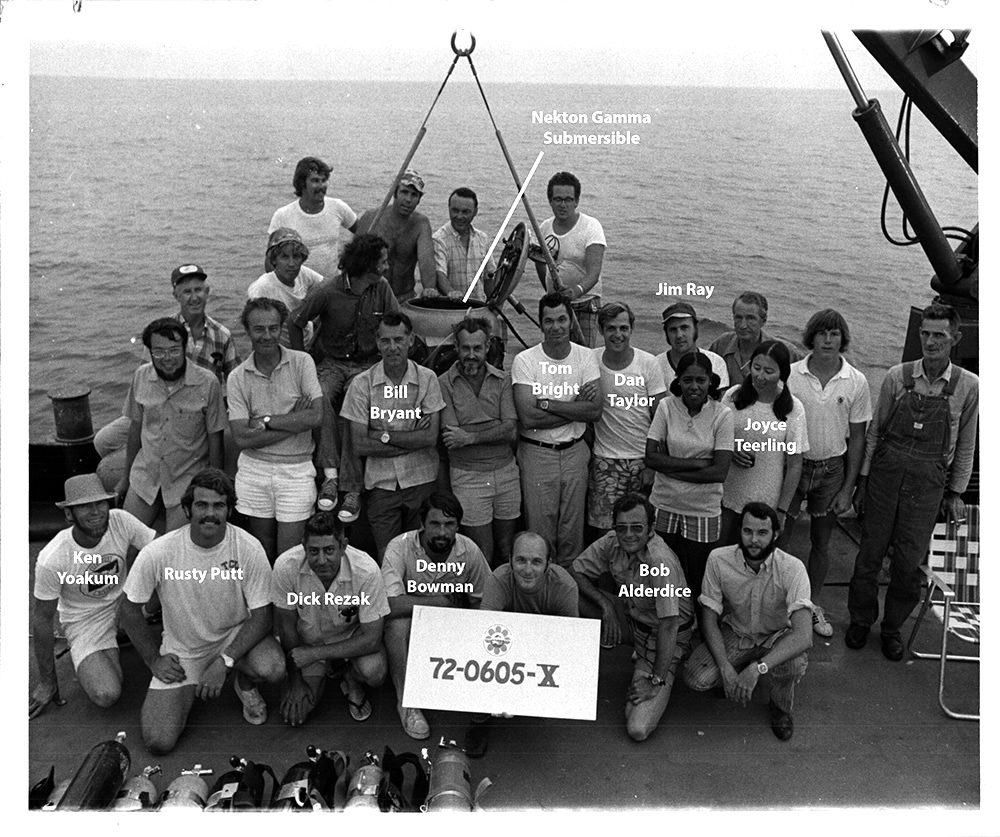
The results of the research conducted by FGORC, including studies of reef communities below 150 meters, were published in the 1974 book Biota of the West Flower Garden Bank, which was edited by Thomas J. Bright and Linda H. Pequegnat.

